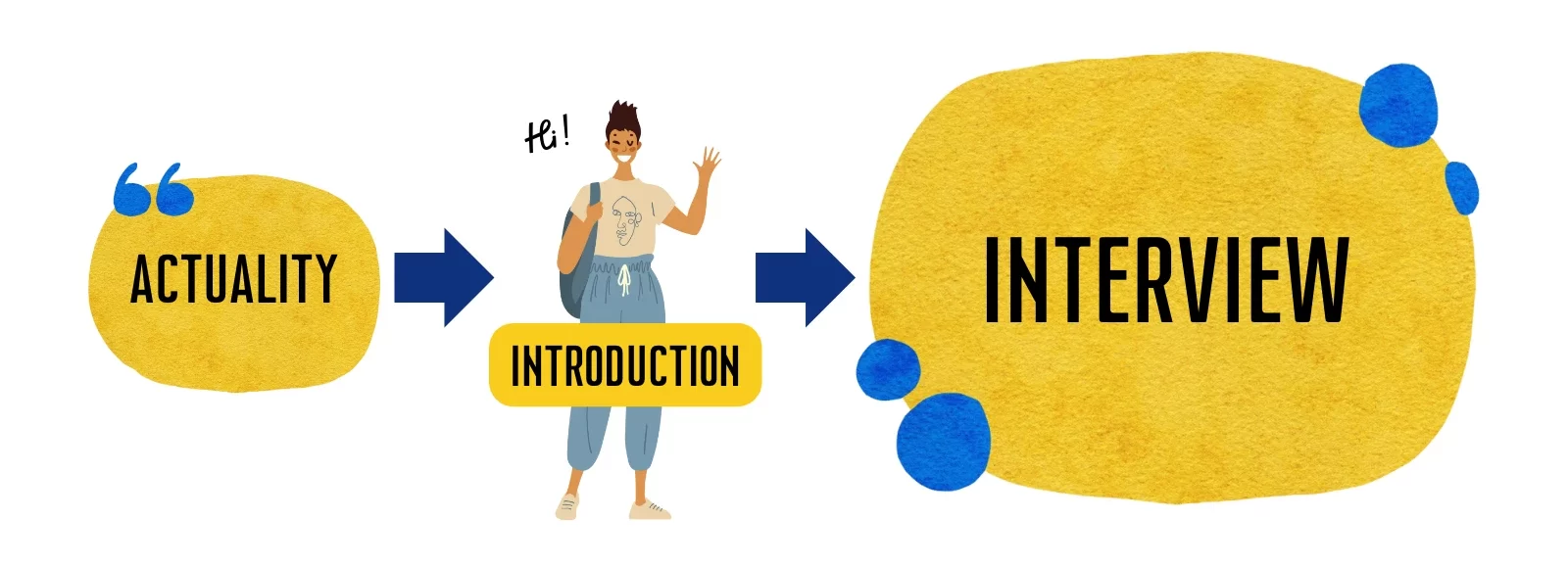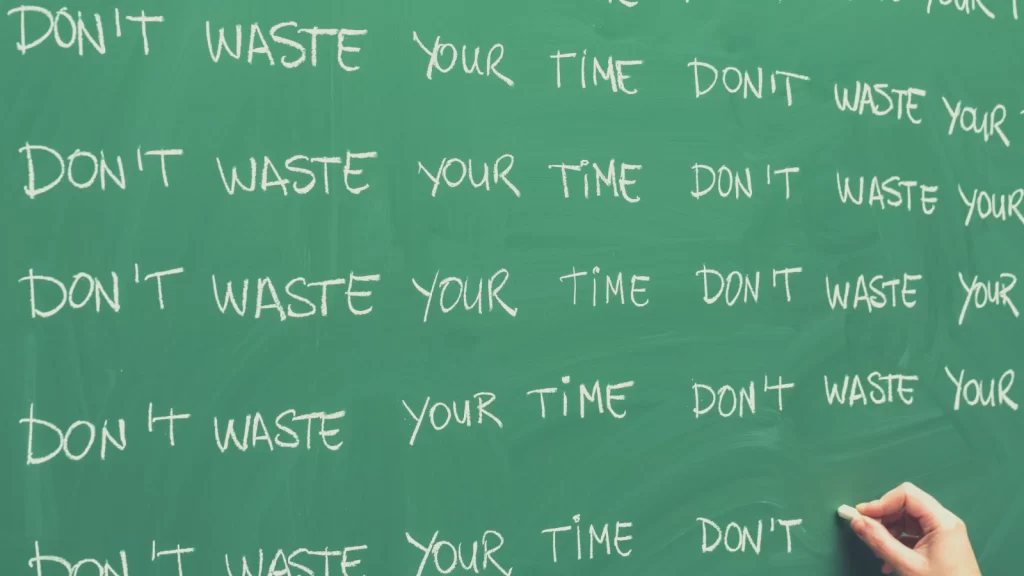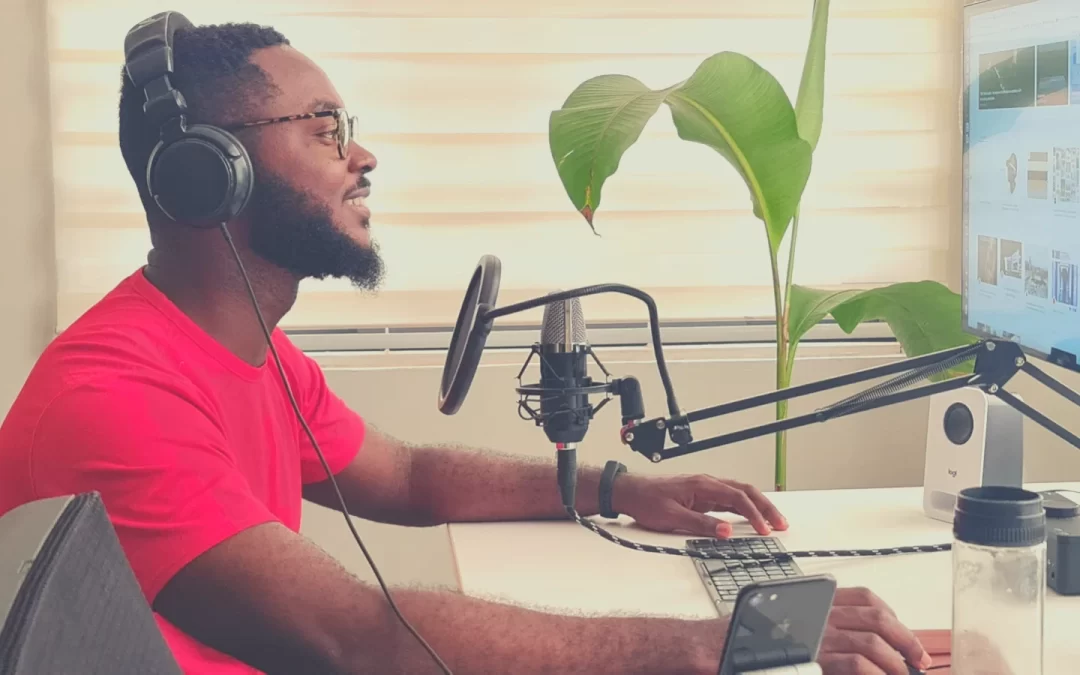The best way to start your podcast is by demonstrating value. I’m going to break down what that means here. So if you really want to nail your podcast introduction, follow along for tips and advice that’ll help boost your creativity and storytelling.
The first few seconds of your podcast introduction matters
Experienced storytellers know that the first few seconds or lines of a new piece of content are critical to the success and engagement of the story you’re trying to tell. That goes for text, video, and especially audio.
However, the burden of engaging the listener is harder for audio storytellers. That’s because audio doesn’t have the ability to be scanned, like text, or can be masked with striking visuals, like with video. Instead, audio storytellers must appeal to the audience’s sense of purpose for listening.

What podcasters promise their audience members through their genre, title, description, and social media posts teasing each episode set expectations for what you’re producing.
For example, if I am listening to a fiction podcast and it’s a mystery thriller, I expect to be transported to a new world through the podcast’s sound design. I want to hear the rustling of leaves, creaky doors, and more real-world sounds. Essentially, I want to be in the middle of a scene.
However, for most of my audience, that’s not the expectation. And for most branded podcasts, that’s far from the expectation.
Instead, branded podcasts are expected to share their expertise and value upfront. In the first few seconds, you have to reinforce why each particular episode you’re producing is worthy of your listener’s time.
Whether it is an interview or a monologue, you want your listener to get a taste of your episode’s message and takeaways. At the very least, your podcast introduction should foreshadow why your listeners will benefit from completing the episode.
Conversely, in those first few seconds, you should avoid naming your show and ID’ing yourself before you’ve adequately stated why the listener should stick around. (This is a major pet peeve of mine!)

Creative ways to demonstrate value in the podcast introduction
There are two primary ways for branded podcasters to creatively begin their episode.
Anecdotes
Anecdotes give you the ability to not-so-subtly address a theme or topic. By beginning each podcast episode with a unique anecdote, you engage your audience on an emotional level while still delivering on their expectations. With an anecdote, you can more easily frame the conversation about your episode subject before pivoting to something more concrete.
My suggestion to clients through the podcast development process is to use scripted anecdotes to frame your discussions and inject your brand’s personality into your podcast. It’s your opportunity to express values and highlight relatable characters that your audience will see in themselves.
Actualities

An actuality is a soundbite or quote from your interview. It is typically succinct and punchy, usually less than 20 seconds (preferably less than 10), and quickly summarizes the discussion.
The benefit of a good actuality is that it introduces a guest and their core insights within the first few seconds of an episode. It also gives you a good formula to work with as you construct your episode.
For example, start with an actuality, then transition to identifying yourself, the show, and your guest, before moving into the full interview.
This is a great way to signal to your audience the value of the interview.
Other ways to start your podcast introduction
Sometimes, getting straight to the point is best.
As an editor, there have been countless times I’ve removed the first few sentences of a monologue or anecdote in an episode to zero in on the most valuable information.
You should do the same.
By removing the introductory statements (“Hi, my name is…”), you make space for the value statements, such as what your particular episode is about and what your listener will get out of it.
Remember that listeners already have access to your show’s name, the title of the episode, the description, and your name as the host. That information is important but secondary to expressing value.
Similarly, in interviews, you can cut right to the first question of your interview in most cases and backfill any biographical information you want to share.
These less creative methods save your audience time and speed up your production.

Here’s what you need to avoid
You should never have unnecessary chit-chat unless your brand is built off the power of your personality. So if you’re Kim Kardashian, you can talk about your family issues, skincare routines, and what you ate that morning, and that would be completely on brand. But for most podcasters, that’s simply not the case.
It’s best to avoid the weather, your weekend activities, or what you’re eating unless your podcast is about those things. Otherwise, it’s a waste of your audience’s time. And it’s certainly not a good signal to your audience that you’ll take their time seriously going forward.
You should also avoid oversharing the biographic information of your guests. Yes, it’s important to qualify who you’re speaking to, but not at the expense of your listener’s attention. A good rule of thumb is to keep the info on your guest to two or three sentences, and if there’s anything else that needs to be added, include that additional information as it comes up in your conversation naturally.
Summary
To nail your podcast introduction, you have to cut to the chase. You have to express value first. You can do that creatively by using anecdotes that are thematically related or with an actuality that summarizes your interview. You can even combine the two. What’s important is that your podcast starts delivering on its promised value as quickly as possible, so your audience is immediately engaged. They’ll thank you for it in the long run.
That’s a wrap for this month. Let me know your thoughts, feedback, recommendations, or questions on your branded podcast by leaving a comment or reaching out to me on Twitter or LinkedIn. If you want more content like this in your inbox, sign up for my monthly newsletter here.

